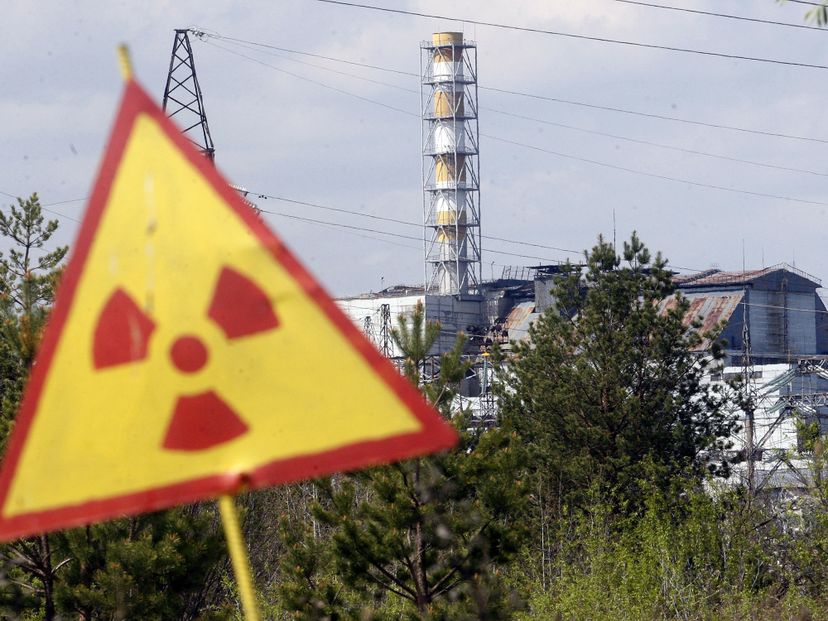
About This Quiz
We live in a radioactive world, and we're not just talking about the times when a nuclear plant is melting down and scaring the heck out of us. How much do you know about the ABGs (or alphas, betas and gammas) of nuclear radiation?It's true that all elements with an atomic number higher than 83 are radioactive, but there are also several radioactive elements with lower atomic numbers. The true test of whether an element is radioactive is whether any of its isotopes -- or configurations -- are stable. If not, the substance is radioactive.
A CT scan would expose you to far more radiation than all of the other options combined, yet still delivers only about a tenth of the yearly radiation level deemed safe for workers at nuclear plants. And in case you were wondering, eating a banana actually exposes you to a tiny bit more radiation than living next to a nuclear power plant for a year.
At the end of the day, nuclear power plants work a lot like those that use fossil fuels, by generating steam that powers massive turbines which, in turn, generate electricity.
Advertisement
Any form of the above can be harmful in certain situations. For example, gamma rays are unique in that they have great penetrating power, allowing them to pass through the body and damage cells in the process. Ultimately, though, the U.S. Environmental Protection Agency recommends that you consider time, distance and shielding when considering exposure to ionizing radiation.
The next time you change the battery in your smoke detector, check to see if there's a label warning you about the radioactive material Americium 241 contained within. If so, there's no need to be alarmed (unless there really is a fire).
Given enough time, all radioactive substances will decay until they're no longer radioactive. Unfortunately, there's nothing we can do to speed that process along.
Advertisement
While better than nothing, the vinyl hazmat suits nuclear technicians wear only block roughly 30 percent of gamma radiation. Accordingly, workers have to closely monitor the amount of exposure they receive and make sure to head for safety as that amount approaches predetermined safety limits.
Becquerel, a Paris-born scientist, first discovered natural radioactivity in 1896 after conducting experiments with uranium salts and phosphorescent plates. His discovery landed him a Nobel Prize for Physics in 1903, a prize he shared with Pierre and Marie Curie.
Believe it or not, the first nuclear reactor, known as Chicago Pile-1, was located directly underneath the University of Chicago's Stagg Field bleachers. Shortly after the reactor was activated, it was dismantled and moved farther away from such a densely populated area. Good call.
Advertisement
Yep, some nuclear submarine models in the U.S. Navy are designed to never need new fuel, allowing them to run an estimated 33 years after which the submarines are retired from the fleet.
While there are plenty of nuclear reactors used for everything from conducting research to powering submarines, we use several hundred plants to create electricity.
Acute radiation syndrome occurs when someone is exposed to an extremely high dose of radiation over a short time. Within hours, the patient develops different symptoms like the ones mentioned above. The illness is extremely serious and often fatal despite treatment.
Advertisement
For now, the United States simply stores its high-level nuclear waste at the place where it was generated. While the Yucca Mountain facility has been built to store the waste, it's currently not being used as policy makers determine whether or not the facility provides safe long-term containment.
When we talk about half-life in terms of radioactive decay, we're speaking in terms of probability. That's because, while we can't predict when a specific atom will become unstable and emit radiation, we can predict the average rate of decay for a given radioactive material.
Uranium's most prevalent isotope takes its time to radioactively decay, about 4.5 billion years in fact.
Advertisement
To date, lab created elements with extremely high atomic numbers like ununoctium have proven extremely unstable, but some nuclear physicists believe that if they combine the right number of protons and neutrons together, they may create new, relatively stable elements with some very interesting properties.
Dosimeters work much like Geiger counters, except that they keep a running tab of how much radiation they've received. When that amount reaches predetermined limits, the dosimeter alerts the worker to leave the area.
Having the chance to name a new element is considered one of the highest honors in nuclear physics, though so far nobody has taken that opportunity to honor actor and martial artist Jean-Claude Van Damme.
Advertisement
Although it took decades to understand the true dangers of radioactive materials, nobody went so far as to put a highly radioactive material like polonium into a children's toy.
It's true we sometimes purify water with radiation, but it's of the ultraviolet variety rather than the nuclear variety. In fact, nuclear power plants constantly struggle to find ways to dispose of contaminated water.